Best Things to Do in Argentina Top Attractions and Sights
Last updated on June 11th, 2025 at 10:40 pm
You know that feeling when you book a trip for three months and accidentally fall so hard for a place that you end up staying six? Yeah, that’s exactly what happened to me in Argentina right after I started checking off the best things to do in Argentina and realized I’d barely scratched the surface.
I landed in Buenos Aires in January 2019 with a backpack, terrible Spanish, and zero clue what I was getting into. Fast forward six months later, and I’m crying at Ezeiza Airport because leaving felt like abandoning family.
Argentina isn’t just another South American destination you tick off your bucket list. This country grabs you by the soul and refuses to let go. It’s where European sophistication crashes into Latin passion, where glaciers the size of Manhattan coexist with wine valleys that’ll spoil you forever, and where strangers become lifelong friends over shared mate and poorly attempted tango moves.
I’m about to share everything – the spots that made me extend my visa three times, the experiences that still wake me up at 3 AM with wanderlust, and the honest truth about what makes Argentina absolutely irresistible.
Table of Contents
Buenos Aires: The City That Stole My Heart (And My Sleep Schedule)
Living in Buenos Aires for six months taught me that this city operates on its own gravitational pull. Dinner doesn’t start until 10 PM, bars don’t get interesting until 2 AM, and somehow everyone looks effortlessly chic while running on four hours of sleep.
I rented a tiny apartment in Palermo Soho, right above a café called Lattente. Every morning, Rosa (the 60-something owner who treated me like her adopted nephew) would have my cortado ready before I even walked in. She’d lecture me about eating more vegetables, ask about my mom back home, and slip extra medialunas into my bag when she thought I looked skinny.
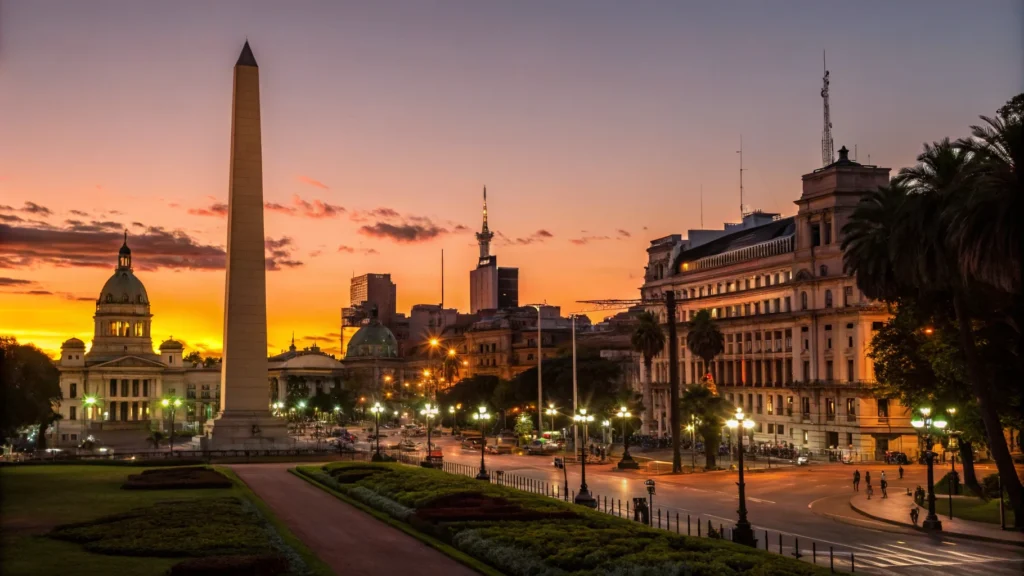

The Real Buenos Aires Neighborhoods (Beyond the Tourist Maps)
Palermo Hollywood – Don’t let the name fool you. This isn’t some wannabe LA neighborhood. It’s where porteños (Buenos Aires locals) actually hang out. The restaurants here don’t even turn their lights on until 8 PM, and showing up to a bar before midnight marks you as a tourist faster than wearing a fanny pack.
I learned this the embarrassing way at a cocktail spot called Florería Atlántico. Showed up at 9 PM to an empty bar, sat alone for two hours nursing an overpriced drink while the bartender probably felt sorry for me. Came back at midnight the next week and couldn’t find a seat.
San Telmo on Sundays transforms into this magical street theater that no guidebook can properly capture. Sure, there’s the antique market at Plaza Dorrego, but that’s just the opening act. Street musicians appear on every corner, tango dancers materialize from thin air, and vendors sell everything from vintage vinyl to homemade empanadas.
Here’s the insider move: grab a table at Bar Plaza Dorrego, order a Quilmes beer, and become a professional people-watcher. You’ll see three-generation families sharing huge Sunday lunches, teenagers practicing tango moves they learned on TikTok, and tourists frantically trying to photograph everything while missing the actual experience.
La Boca gets dismissed as touristy because of Caminito street, and sure, it’s packed with tour groups taking selfies with colorful buildings. But walk literally two blocks in any direction and you’ll find the real neighborhood. I discovered El Obrero, this legendary parrilla where construction workers eat lunch next to businessmen, and everyone argues passionately about Boca Juniors’ latest game while sharing plates of provoleta cheese.
Tango: How I Learned to Dance Despite Having Two Left Feet
Full confession: I avoided tango for my entire first month. I’m the guy who trips over perfectly flat sidewalks, so coordinating dance moves seemed like public humiliation waiting to happen.
Then I met Elena in my Spanish class. Seventy-three years old, Italian immigrant, been dancing tango since she was fifteen. When she discovered I’d been living in Buenos Aires for four weeks without trying tango, she looked personally insulted.
“Impossible!” she declared, grabbing my arm. “This is like living in Paris and never seeing the Eiffel Tower!”
Next Tuesday, she dragged me to La Viruta, this underground milonga in a converted warehouse in Villa Crespo. The place was packed with every age imaginable – teenagers dancing with their grandparents, middle-aged couples moving like liquid poetry, and other terrified beginners hiding in corners.
Elena taught me exactly three moves: walk, side step, close. That’s it. “Tango is not about fancy steps,” she explained while accidentally stepping on my feet for the tenth time. “It’s about connection. Feel the music, feel your partner, stop overthinking everything.”
By midnight, I’d managed one complete song without completely embarrassing myself. The feeling was incredible – like I’d unlocked some secret frequency of the city that tourists never access.
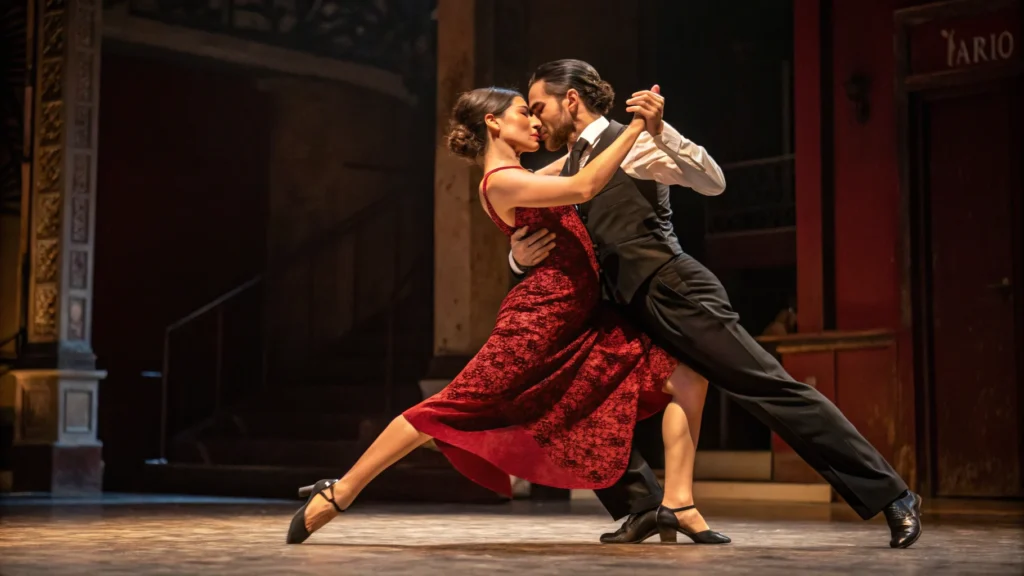

Where to experience authentic tango:
- La Viruta – Tuesday beginner nights with the most patient people on earth
- El Querandí – dinner show that’s touristy but legitimately spectacular
- Café Tortoni – historic venue with afternoon performances and incredible hot chocolate
- Plaza Dorrego – free Sunday lessons where everyone’s learning together
Iguazu Falls: The Day Nature Completely Showed Off
I took the overnight bus from Buenos Aires to Puerto Iguazu – 18 hours of surprisingly comfortable travel with movies, decent food, and seats that recline almost completely flat. Arrived at sunrise feeling groggy but excited.
Nothing, absolutely nothing, prepares you for Iguazu Falls.
I’d watched videos, seen countless photos, read every description online. Completely irrelevant. Walking along those metal catwalks with 275 waterfalls thundering around you is like being inside nature’s own stereo system cranked to maximum volume.
The star of the show is Devil’s Throat – this massive U-shaped drop where the Iguazu River just disappears into mist and chaos. You take a little ecological train through the jungle to reach the viewing platform, and the whole ride you can hear this growing rumble like distant thunder getting closer.
Then you turn the final corner and BAM. The noise hits you first – this deep, bone-rattling roar that you feel in your ribcage. Then the mist absolutely soaks you within about thirty seconds. I stood there for over an hour, completely drenched, taking videos that couldn’t possibly capture what I was experiencing.
Here’s what nobody mentions in travel guides: bring a waterproof phone case and multiple dry bags. The mist isn’t gentle – it’s like standing next to industrial sprinklers pointed skyward. I watched three separate tourists frantically trying to dry their phones with soaking wet t-shirts.
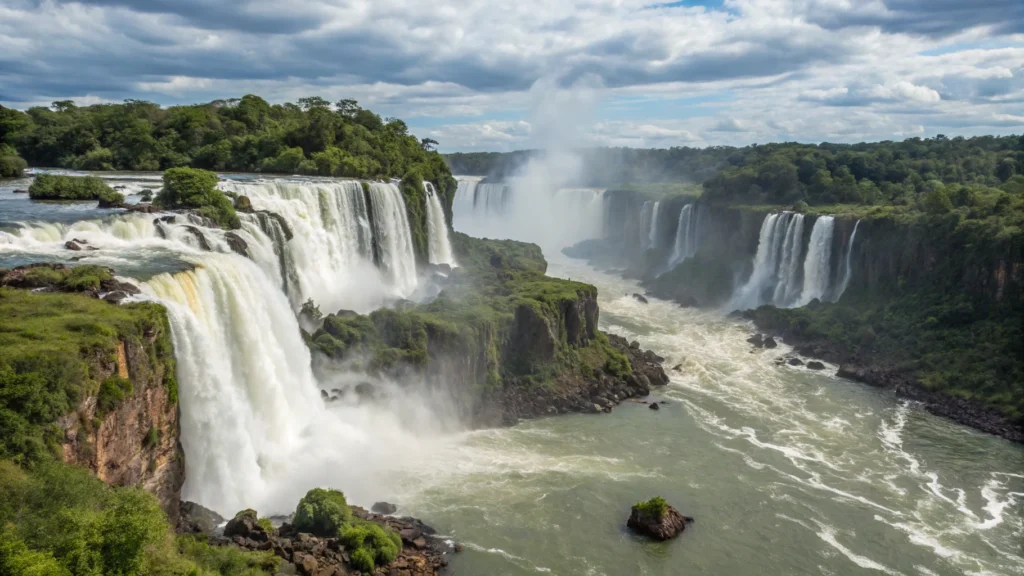

Essential Iguazu tips:
- Stay in Puerto Iguazu town instead of expensive resort hotels
- Buy national park passes online to skip entrance lines
- Arrive at 8 AM sharp – it gets crowded and sweltering by noon
- Pack complete waterproof gear plus dry change of clothes
The Brazilian Side (Because You’re Already Right There)
Cross the border to see Iguazu from Brazil – completely different perspective that’s absolutely worth the passport stamps. Argentina puts you in the action; Brazil gives you the postcard panoramic views. You need both angles to truly appreciate the scale.
Border crossing is straightforward but bring your passport and allow extra time. I met this retired German couple who’d been traveling South America for eight months, and they said Iguazu was still their absolute favorite stop. “We’ve seen waterfalls on six continents,” the husband told me, “but this place is alive in a way that’s impossible to describe.”
Patagonia: Where I Discovered What “Overwhelming Beauty” Actually Means
I spent three weeks in Patagonia during February 2020, right before the world went completely sideways. It was supposed to be my final South American stop before heading home. Instead, it became the experience that completely rewired my understanding of what travel could be.
El Calafate and Perito Moreno Glacier
El Calafate exists basically because of one glacier, but what a glacier it is.
Perito Moreno spans 97 square miles of constantly moving, cracking, calving ice that flows into turquoise Lago Argentino. Every fifteen to twenty minutes, you hear this crack like a rifle shot, followed by a house-sized chunk of ancient ice crashing into the lake below.
I did the ice trekking tour – they strap metal crampons to your hiking boots and you walk directly on the glacier surface. Our guide Matías had been doing this for nine years and still got genuinely excited pointing out 800-year-old ice formations. “This ice is older than your entire country’s history,” he joked to our group of American tourists.
Walking on millennium-old ice while wearing metal spikes feels exactly as surreal as it sounds. The glacier is riddled with crevasses and ice caves that glow this impossible electric blue color. At one point, Matías had us lie flat on the ice and drink glacier water straight from a crystal-clear meltwater stream. It was the purest, coldest water I’ve ever tasted.
But here’s the moment that absolutely got me: We stopped for lunch right on the glacier, and I’m sitting there eating a ham sandwich while surrounded by this ancient, living landscape that existed before human civilization. The silence was so complete I could hear my own heartbeat. For maybe the first time in my adult life, I wasn’t thinking about emails or schedules or what comes next. I was just completely, utterly present.
El Chaltén: Hiking Capital That Absolutely Earned Its Title
If you love hiking, El Chaltén will become your new obsession. This tiny mountain town sits at the base of Mount Fitz Roy, and every single trail here leads to views that belong in fantasy movies.
The hike to Laguna de los Tres is absolutely brutal – eight hours round trip with a leg-destroying final ascent that had me questioning my life choices. But the payoff is absolutely massive. You spend most of the day walking through Southern beech forests and river valleys, thinking “this is pleasant” but nothing extraordinary.
Then you climb this final rocky section that destroys your quads, and suddenly you crest the hill and there’s Mount Fitz Roy perfectly reflected in an alpine lake, with hanging glaciers and granite spires that look like they were carved by giants.
I sat by that lake for three hours, eating trail mix and watching the light constantly change on the mountain faces. A couple from Chile shared their mate tea with me, and despite barely speaking the same language, we spent the whole afternoon laughing and pointing at different peaks like excited kids.
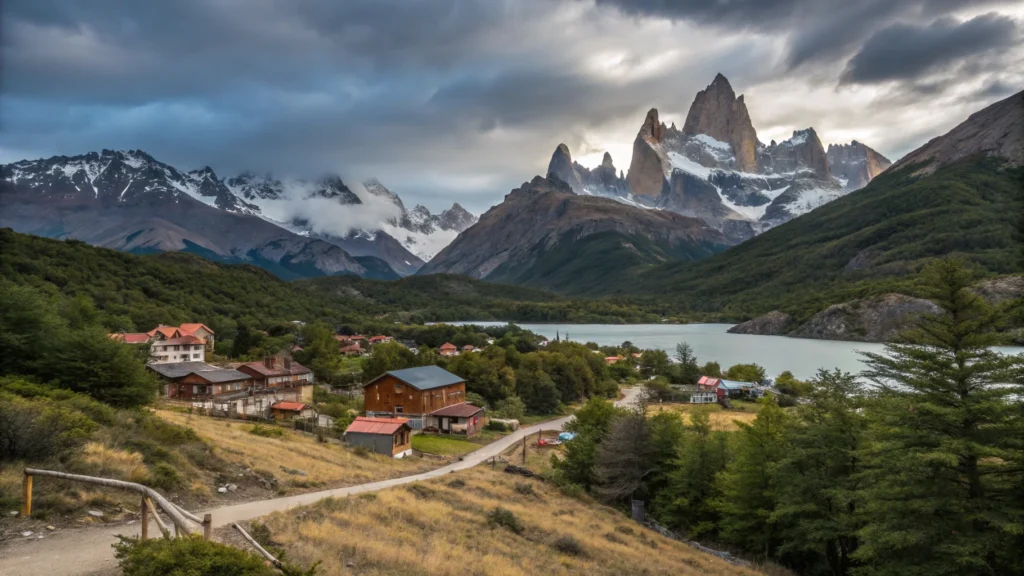

Patagonia survival guide:
- Weather changes every ten minutes – layers are absolutely everything
- Book accommodations months ahead (seriously, the entire region has limited beds)
- Rent proper hiking gear in town – way cheaper than buying new
- February and March have best weather but highest crowds and prices
Mendoza: The Wine Region That Converted This Beer Guy Forever
I need to be completely honest – I was never a wine person. Give me a cold beer over a glass of wine literally any day. But Mendoza absolutely, completely converted me.
It’s not just that the wine is incredible (though it genuinely, really is). It’s the entire culture surrounding wine here. In Mendoza, wine isn’t pretentious or intimidating – it’s just part of daily life, like sharing bread or having conversations.
I stayed at this family-run hostel where the owner, Miguel, made his own wine in the backyard using grapes from his cousin’s vineyard. Every evening around sunset, he’d open a bottle and invite whoever was around to share it on the patio. We’d sit there for hours – backpackers from Germany, retirees from Australia, locals getting off work – all sharing stories and passing around this amazing Malbec that Miguel crafted himself.
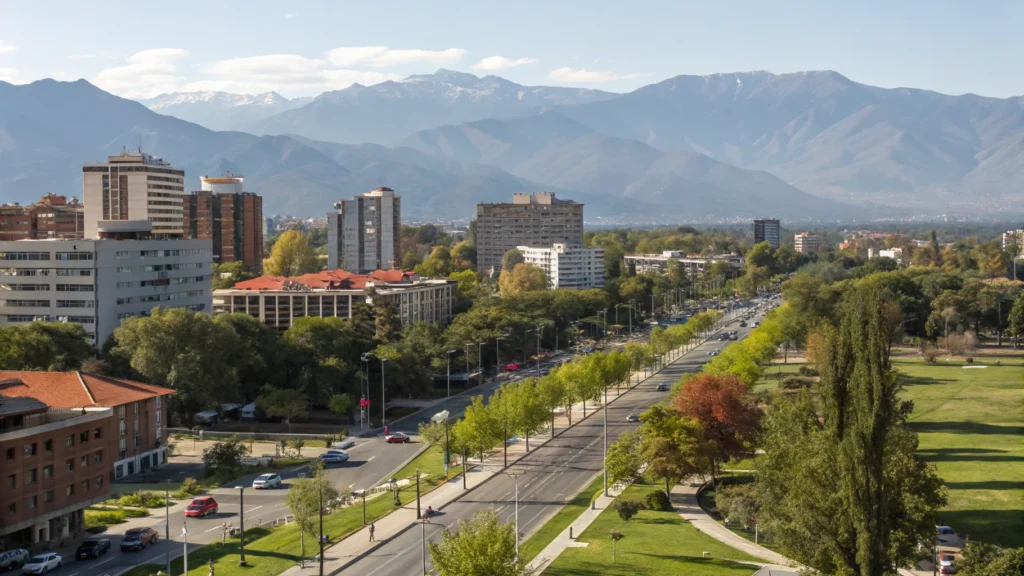

Bike Tours and Family Wineries That Changed Everything
The classic move is renting bikes and touring wineries around Maipú district. It sounds touristy, but it’s actually perfect – you get slightly tipsy at each stop, bike between vineyards through gorgeous countryside, and work off the alcohol before the next tasting.
At Trapiche, one of the large commercial operations, they showed us industrial wine-making processes and let us taste vintages from different years. Interesting and educational, but felt somewhat corporate.
Then we stopped at this tiny family operation called Bodega La Rural, where the owner’s 80-year-old grandmother served us homemade empanadas between tastings and told stories about harvest seasons from the 1960s. She spoke zero English, my Spanish was absolutely terrible, but somehow we spent an hour communicating about family traditions and how wine connects generations across time.
Their Malbec was absolutely incredible – earthy and complex with this long finish that made you want to sit quietly and contemplate life. I bought three bottles to take home and later realized I should have bought thirty.
Mendoza wine essentials:
- Try Torrontés white wine – it’s uniquely Argentine and surprisingly floral
- Book at least one high-end tasting and one small family winery
- March is harvest season – incredible time to visit if timing works
- The high altitude here (3,000+ feet) makes wine taste different than anywhere else
Argentine Food: Why I Gained 15 Pounds and Regret Absolutely Nothing
Let’s talk about Argentine beef. I genuinely thought I knew what good steak was before Argentina. I was embarrassingly, completely wrong.
The secret isn’t just grass-fed cattle (though that definitely helps). It’s the asado culture – the art of slowly grilling meat over wood coals while treating the entire process like a sacred ritual.
I’ll never forget this Sunday asado at my Spanish teacher’s family house in San Telmo. Her uncle Carlos was the designated asador (grill master), and he spent four straight hours tending various cuts of meat like he was conducting a symphony orchestra. Different meats went on at precisely timed intervals, got moved around the grill according to some mysterious system, and came off when Carlos decided they were ready – not one second before.
The bife de chorizo I ate that day was honestly one of the top five things I’ve ever put in my mouth. Perfectly tender, incredibly smoky, with this pure beefy flavor that didn’t need any sauce or seasoning. Just perfect, unadulterated meat.
Foods you absolutely cannot miss:
- Empanadas – every province has distinct styles. Salta empanadas include raisins and olives, which sounds weird but works perfectly
- Choripán – chorizo sandwich that’s perfect late-night food after tango dancing
- Dulce de leche – on literally everything. Ice cream, pastries, eaten straight from jars at 2 AM
- Mate – bitter tea that’s more social ritual than actual beverage
The Mate Culture and Other Best Things to Do in Argentina
Mate isn’t just tea – it’s Argentina’s social adhesive. You share the same metal straw (bombilla) with everyone in the group, which initially felt unsanitary but becomes completely natural.
There are unspoken rules: never move the bombilla around, don’t say “gracias” until you’re completely finished (it signals you don’t want more), and don’t hog your turn. Break these rules and locals will definitely notice, though they’re usually patient with foreigners.
Once you understand mate etiquette, it becomes this beautiful daily rhythm. I’d meet my neighbor Carla every morning at 10 AM on her apartment balcony. She’d prepare the mate with precise ritual, we’d share it while watching the street wake up, and discuss everything and nothing. Some of my deepest conversations in Argentina happened over shared mate with people whose last names I never learned.
Northern Argentina: The Completely Different Country Nobody Mentions
If you venture up to Salta and Jujuy provinces, you’ll discover an Argentina that feels like an entirely different planet. The landscape shifts to Martian red rocks, dramatic canyon formations, and indigenous culture dating back thousands of years.
I took a bus north to Tilcara in the Quebrada de Humahuaca, watching scenery gradually transform from green farmland to these incredible layered rock formations in every color imaginable. The entire valley is a UNESCO World Heritage site – basically a natural rainbow painted across ancient mountains.
In Tilcara, I stayed at this adobe hostel run by a family living in the valley for six generations. The grandmother, Doña Maria, made locro stew that could cure any known ailment, and every evening she’d share stories about growing up when there were no roads and everything traveled by mule.
The night sky up there is absolutely insane. Zero light pollution, crystal-clear air at altitude, and the Milky Way so bright you could actually read by starlight. I spent entire nights lying on the hostel roof, trying to comprehend the universe’s scale while feeling grateful to be exactly where I was.
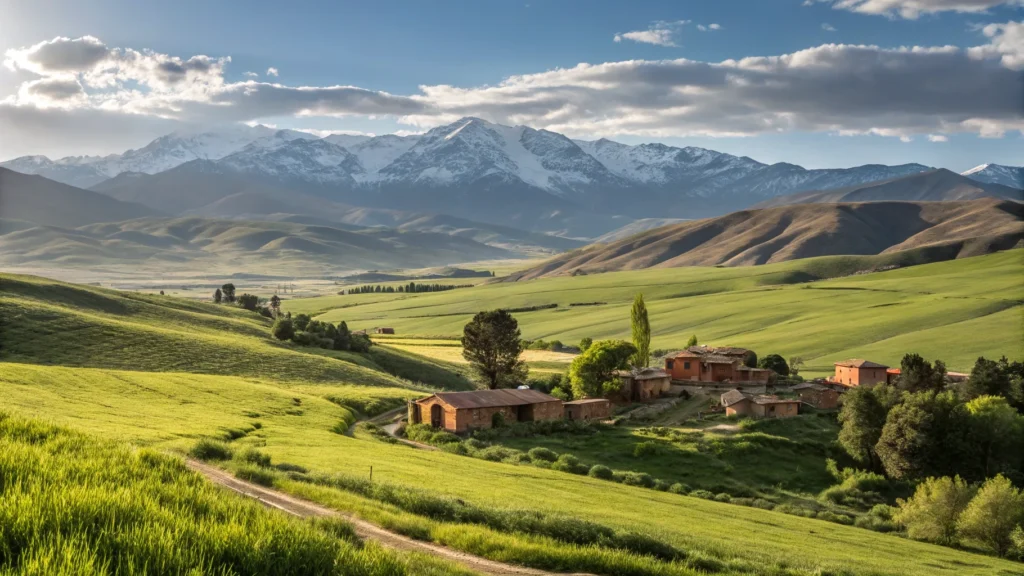

Peninsula Valdés: Where Whales Are Legitimately Bigger Than School Buses
From June through December, Southern Right Whales migrate to Peninsula Valdés for breeding season. These animals are absolutely massive – up to 60 feet long and 100 tons. Seeing them in person feels like encountering living dinosaurs.
I took a boat tour from Puerto Madryn in September, prime whale season. About twenty minutes into the trip, our guide suddenly cut the engine and whispered, “There.”
Initially I saw nothing. Then this enormous dark shape surfaced about 50 feet from our boat, and I realized I was looking at just a whale’s back. The back alone was longer than our entire vessel.
Then the whale breached – launched its complete body out of the water and crashed back down in an explosive spray of foam. Everyone on the boat started cheering and applauding like we’d witnessed a miracle. Which, honestly, we absolutely had.
The best part was watching a mother whale teaching her calf to jump. The baby – still about 30 feet long – kept belly-flopping into the water while mom waited patiently nearby, probably thinking the same thoughts human parents have watching kids learn to ride bicycles.
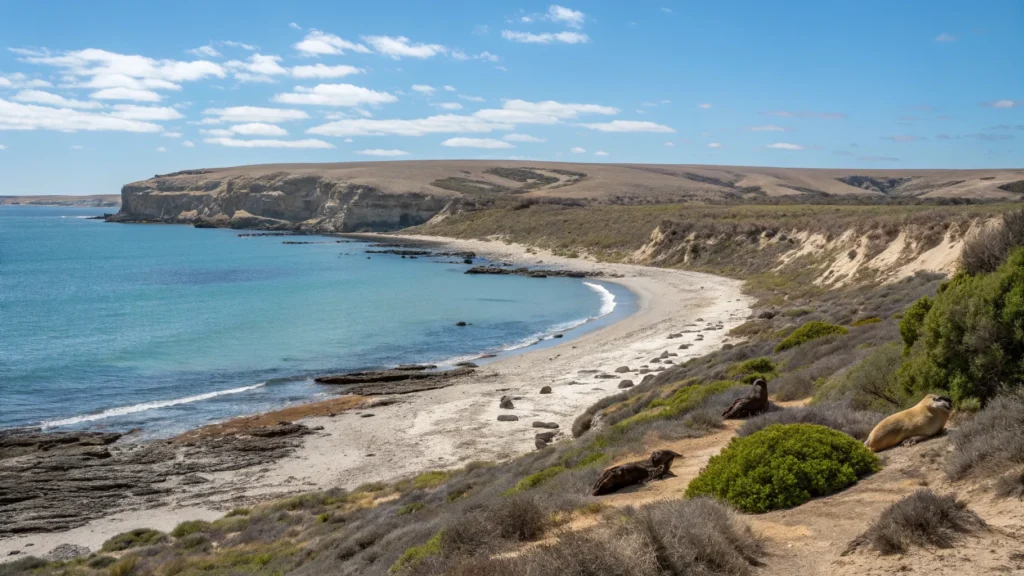

Honest Planning Advice: Making Argentina Work for You
Getting Around This Massive Country: Argentina is genuinely huge – like, bigger-than-Alaska huge. Flying between regions saves time but costs serious money. Long-distance buses are surprisingly comfortable and affordable, but plan for 12-20 hour rides between major destinations. I actually loved the bus travel – incredible way to see countryside and meet locals.
Money Reality Check: Bring US dollars and exchange them on the “blue market” for significantly better rates than official banks. This sounds sketchy but it’s completely normal – ask any hostel or hotel for trustworthy recommendations. Credit cards work in cities but always carry cash everywhere. Restaurant tipping is expected (10-15%) along with tour guides.
Timing Your Visit:
- Summer (Dec-Feb): Perfect for Patagonia, absolutely scorching in northern regions
- Fall (Mar-May): Ideal for wine harvest and comfortable weather everywhere
- Winter (Jun-Aug): Excellent for northern regions, freezing cold in Patagonia
- Spring (Sep-Nov): Good weather, fewer crowds, best accommodation deals
Language Essentials: Learn basic Spanish phrases – even terrible Spanish gets you infinitely further than English alone. Argentines are incredibly patient with foreigners attempting their language, and they genuinely appreciate the effort even if you sound like a confused toddler.
Things I Wish Someone Had Told Me Before Going
Pack for all possible climates if visiting multiple regions. I packed for Buenos Aires summer and nearly froze to death in Patagonia.
Book Patagonia accommodations way in advance. I’m talking months ahead, especially for El Calafate and El Chaltén. There simply aren’t enough hotels, and they fill up incredibly fast.
Don’t attempt seeing everything in two weeks. Argentina rewards slow travel – choose 2-3 regions and really explore them instead of rushing around checking boxes off lists.
The entire country operates on “Argentine time” – everything starts later than advertised, meals happen later than expected, and nobody’s ever in genuine hurry. Embrace this rhythm instead of fighting it.
Why Argentina Completely Changed How I Think About Travel
Here’s what I discovered about Argentina – it doesn’t just show you beautiful places and call it done. This country fundamentally changes how you understand what travel can actually be.
Maybe it’s sharing mate with complete strangers who become genuine friends. Or dancing terribly but enthusiastically in a Buenos Aires milonga while everyone cheers you on. Or sitting in complete silence next to a glacier that existed before humans figured out agriculture.
Argentina taught me that the absolute best travel experiences aren’t about checking famous attractions off bucket lists – they’re about unexpected moments that happen when you’re completely open to whatever comes next. Like that random Sunday when my Spanish teacher’s family invited me to their weekly asado, and I spent the day learning to make chimichurri sauce while arguing about football with three generations of porteños.
Or that morning in El Chaltén when I couldn’t sleep and went for a sunrise walk, ending up spending two hours talking with an elderly man who’d been hiking these mountains for forty years. He spoke no English, I barely spoke Spanish, but somehow we had this incredible conversation about mountains and life and getting older while watching sunrise illuminate Mount Fitz Roy.
Those are the moments that stick with you long after you’ve forgotten hotel prices or whether the food was good. Argentina absolutely specializes in those moments.
The best things to do in Argentina aren’t really “activities” at all – they’re experiences that remind you exactly why you started traveling in the first place. They’re the stories you’ll still be telling years later, the memories that make you randomly smile while doing boring stuff back home.
So pack light, learn some Spanish, bring comfortable walking shoes, and prepare to fall completely, utterly in love with a country that’ll probably ruin you for everywhere else. Fair warning – you might end up like me, canceling your flight home three separate times because you’re not ready to leave yet.
Argentina doesn’t just give you a vacation. It gives you stories that become permanent parts of who you are.
What about you – have you been to Argentina, or is it calling your name for future adventures? I’d absolutely love to hear your stories or help you plan your trip. Drop me a comment below – I read every single one and genuinely love connecting with fellow travelers who understand that the best journeys change you from the inside out.

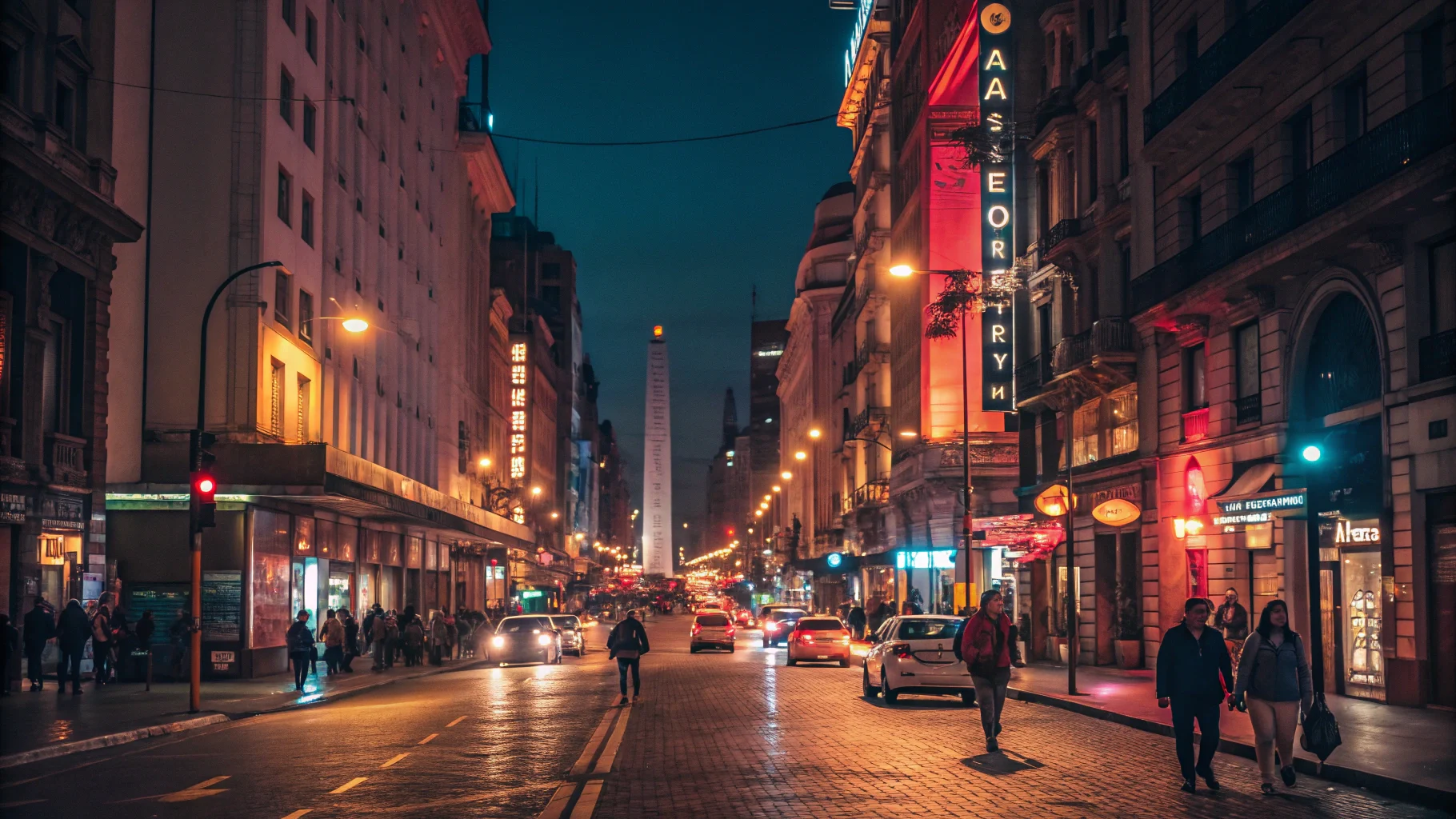
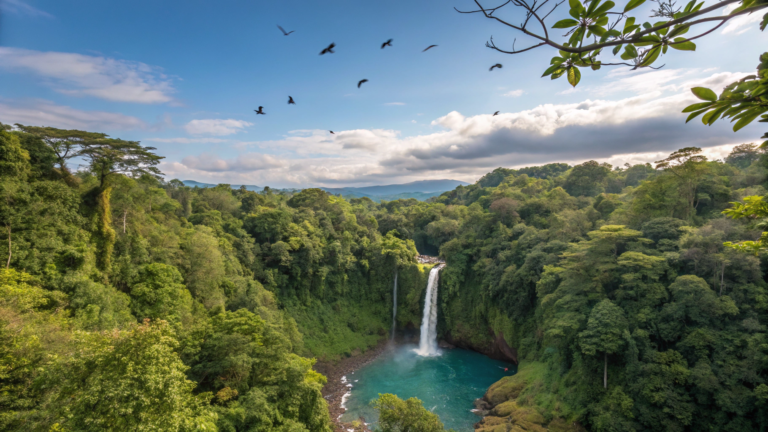
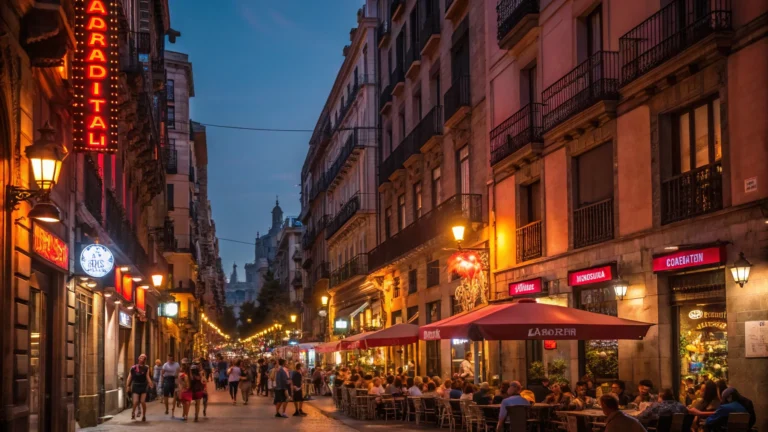
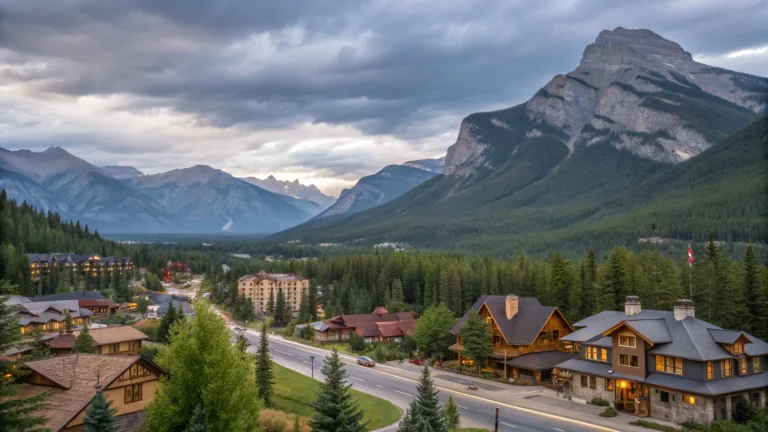
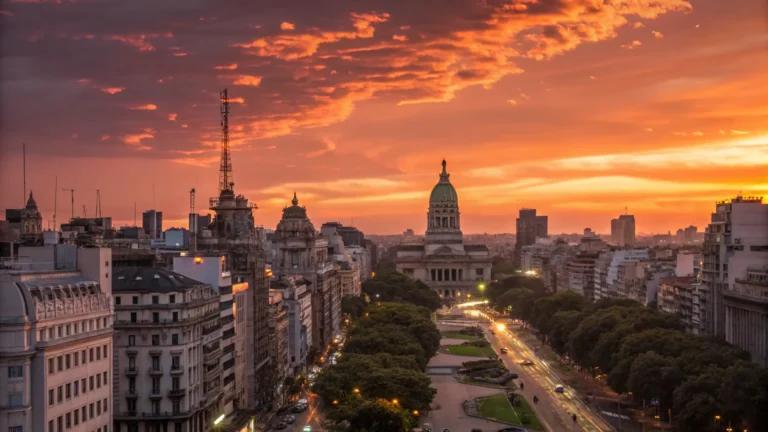
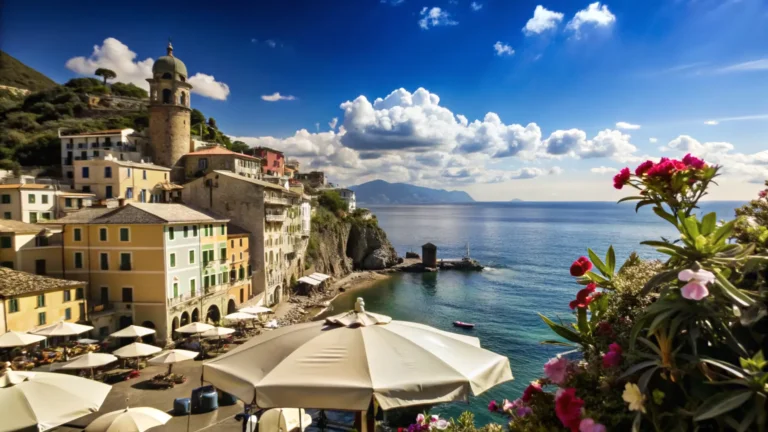
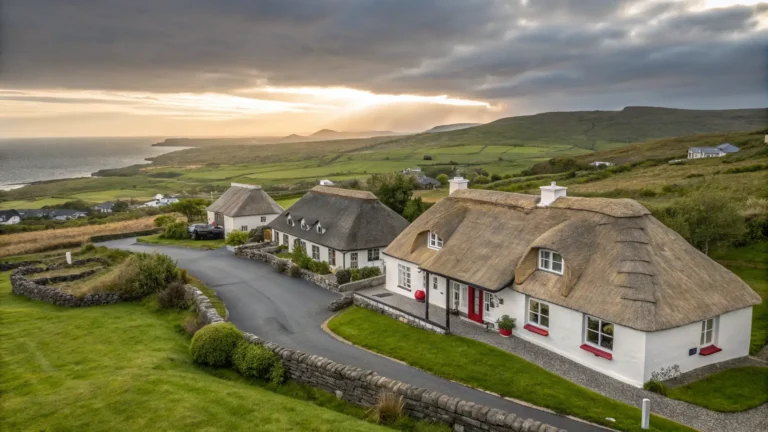
3 Comments